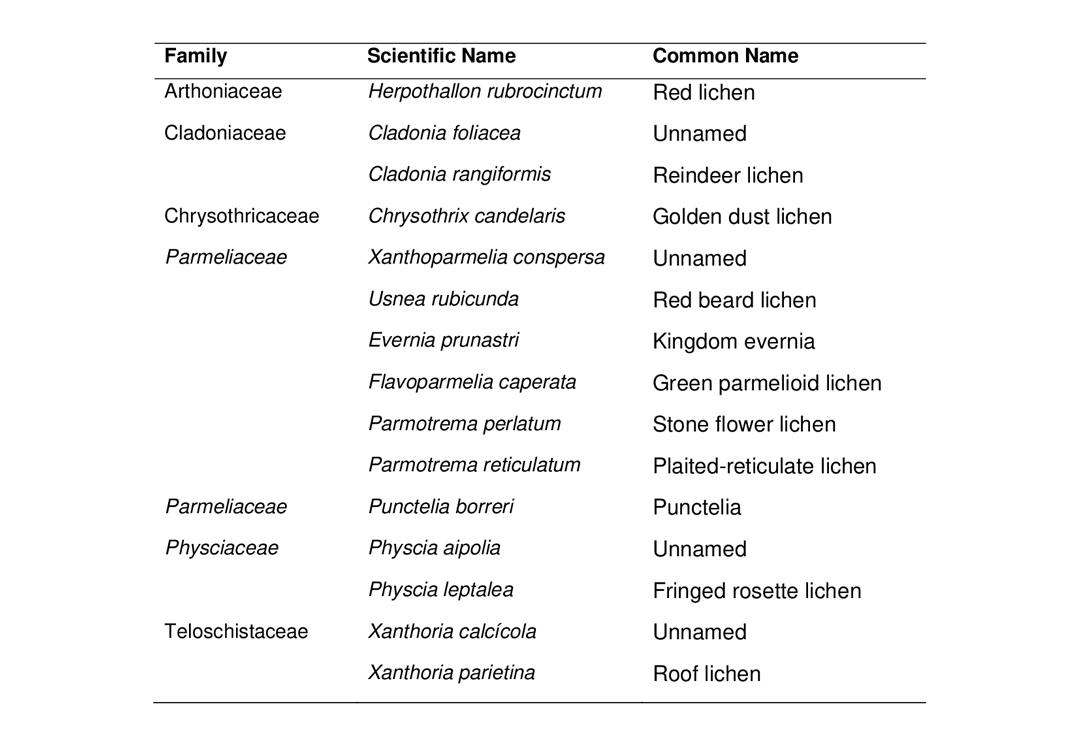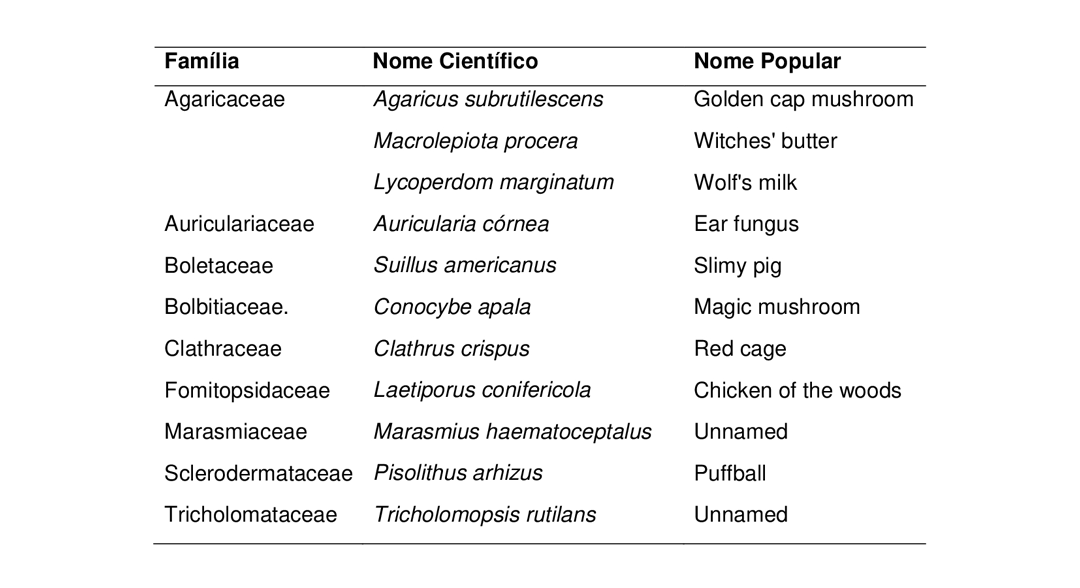
LICHENS AND MUSHROOMS
Lichens
Lichens are formed by the mutualistic association between fungi and algae (or cyanobacteria). This partnership allows lichens to survive in environmental conditions and habitats where the individual partners alone would struggle, providing them with great resistance and longevity. As a result, lichens can be found from the tropics to the poles, on various substrates such as trees, shrubs, mosses, rocks, soil, insect shells, and artificial substrates.
A preliminary study was conducted at the Inn to explore the diversity of this organism. The symbiotic association produces a lichen thallus, displaying different shapes and colors than the partners exhibit when living independently. Based on their growth forms, the presence of three distinct groups was identified: crustose, foliose, and fruticose, spanning across seven families and fifteen species.
List of lichen families found in the study.

Here’s another fascinating insight into the world of lichens: a bioindicator species of air quality was observed on a trail. Popularly known as the red lichen (Herpothallon rubrocinctum), this lichen is highly sensitive to pollution, underscoring the excellent air quality in the Pousada area. Lichens play a crucial role in nature; not only can they fix nitrogen, but they also serve as bioindicators of environmental quality. Additionally, they play a primary role in ecological successions by facilitating the arrival of other organisms in the environment.
Secret World of Wild Mushrooms
Brazil remains largely unexplored in terms of the diversity of fungi in our ecosystems. The Mata Atlântica biome stands out as having the highest recorded number of fungal species in the country, boasting 2,695 species, including 900 species of wild macrofungi naturally occurring in our forests. A survey of wild mushrooms on the Pousada’s trails was conducted as the rainy season began and summer arrived. Nine families, eleven genera, and eleven species of wild mushrooms were identified in the Pousada’s trails. While all were recognized as inedible, they are known to occur in the areas of Serra da Mantiqueira and the Mata Atlântica. This ongoing study promises to bring more insights into the rich biodiversity of these regions, and the list may be updated at any time. Nature truly holds captivating secrets!
List of wild mushrooms at the Inn.

Mushrooms are crucial for the environment as they contribute to processes such as recycling organic matter, playing a role as recyclers. They are significant in carbon sequestration, helping to mitigate the effects of climate change. Additionally, mushrooms serve as biodegradable raw materials for generating various products. They have the potential to replace polluting pesticides and insecticides in food cultivation, offering a more sustainable alternative. Moreover, mushrooms enable the economical recycling of agricultural and agro-industrial residues.

